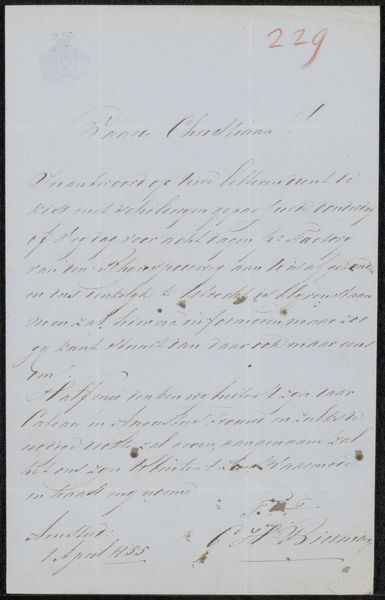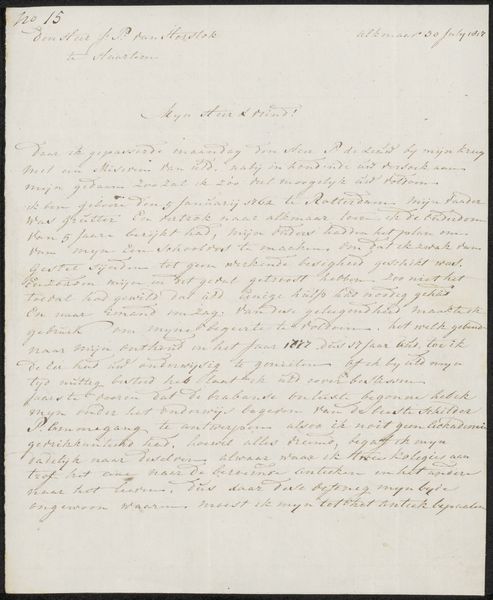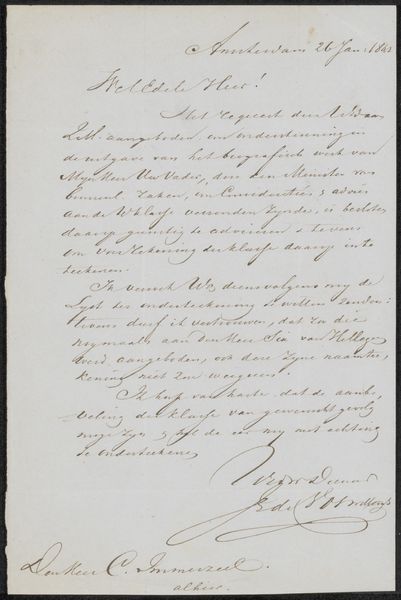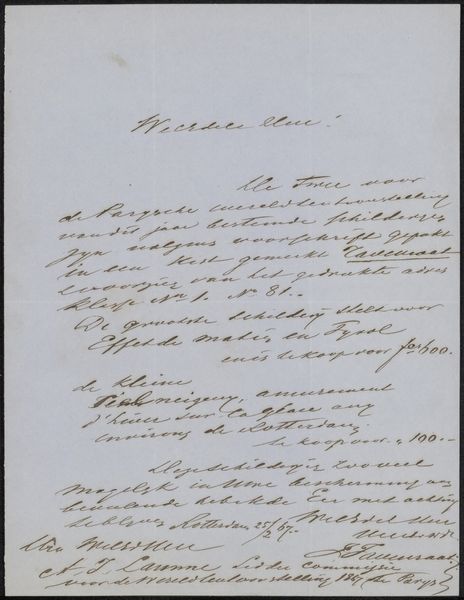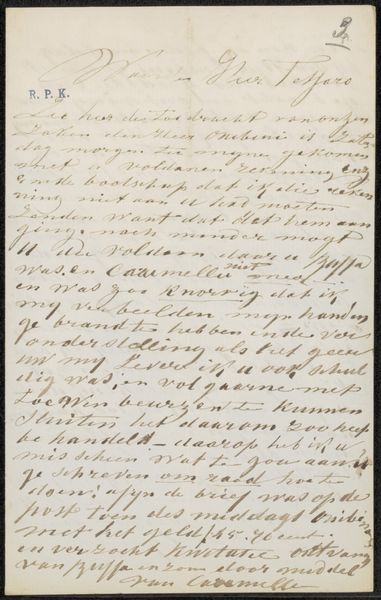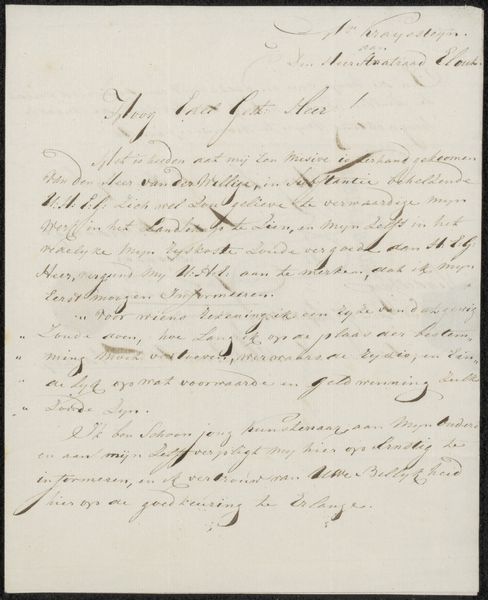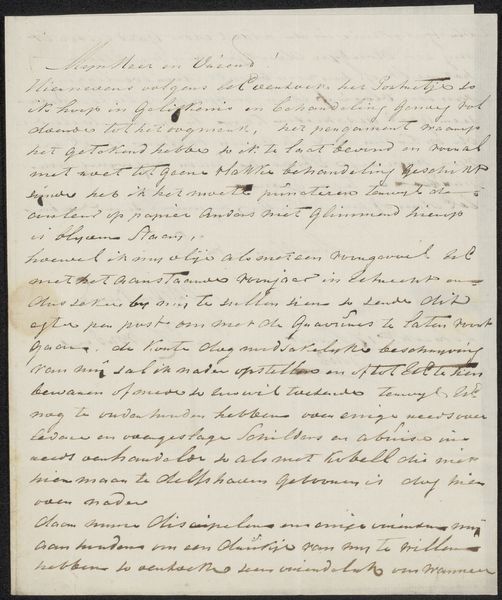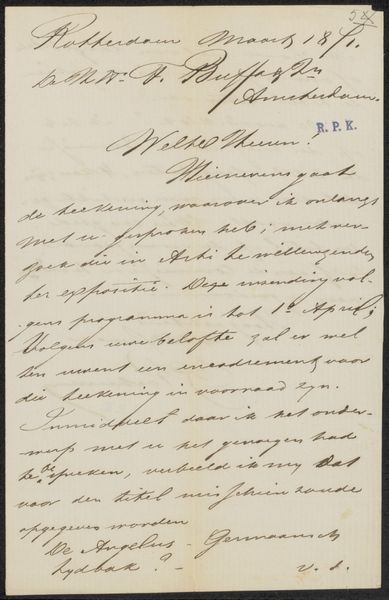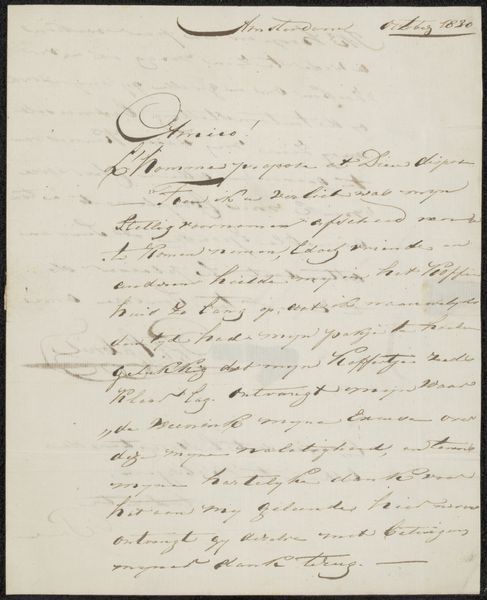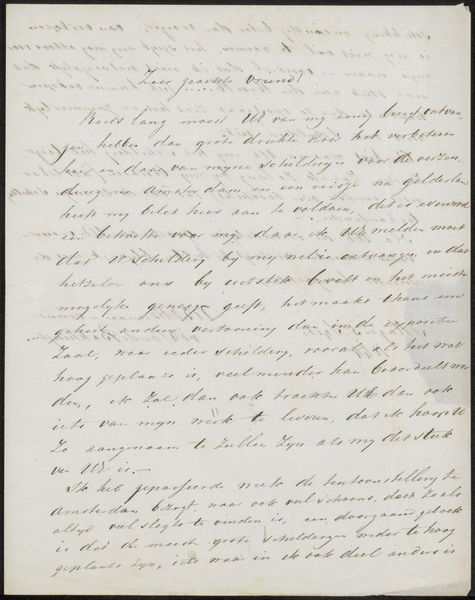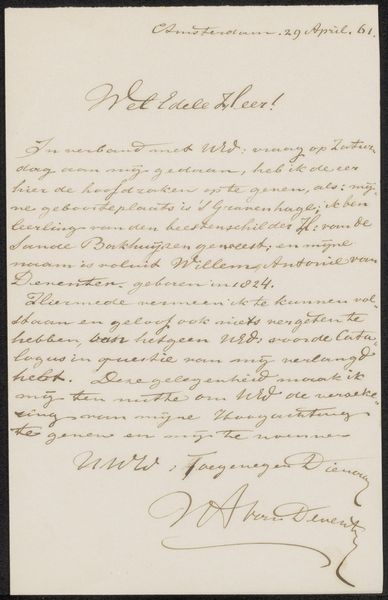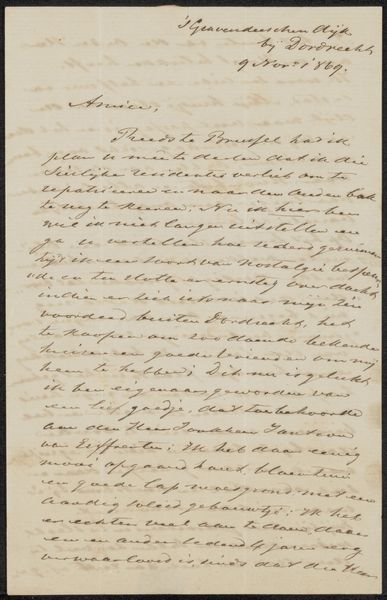
drawing, paper, ink
#
portrait
#
drawing
#
paper
#
ink
#
genre-painting
#
calligraphy
Copyright: Rijks Museum: Open Domain
Editor: So, here we have "Brief aan anoniem," which translates to "Letter to Anonymous," possibly from 1866, by Jan Baptist Tetar van Elven. It’s ink on paper, held at the Rijksmuseum. My first impression is the beautiful calligraphy; it’s so elegant, like a work of art in itself! What can you tell me about its purpose in art history? Curator: Well, beyond its aesthetic qualities, this piece serves as a fascinating glimpse into the art world's institutional practices of the mid-19th century. The letter details the artist offering to send paintings for potential exhibition, highlighting the mechanisms through which artists sought to gain visibility and patronage. It showcases how intertwined artistic creation was with networking, curatorial decisions, and the politics of display. Editor: So, this letter acted as a sort of artist's proposal, but almost in real-time? It feels like a look behind the scenes. Curator: Precisely! Think about it – what factors do you think influenced whether this letter would be well-received? Was it purely based on the quality of work? Consider the social hierarchies of the time, the institutions this artist was contacting, even the artist's established reputation… or lack thereof. Editor: That's interesting... it seems the letter mentions specific subjects for the artworks: a portrait of Pope Pius IX, interiors of churches, but I wonder who "Monsieur" actually was? And how these artworks could represent the public role of art back then? Curator: Good question. We could dive into the significance of depicting religious figures, how that linked to cultural values, public piety, and even political leanings reflected in the market for art at the time. Letters like these unveil those layers. Editor: I hadn't thought of the religious themes in the letter being connected with political values. Curator: That's the historian's approach. So, what have you found most engaging about examining this particular piece through the lens of cultural context and the institutional side of art history? Editor: Definitely recognizing that even beautiful calligraphy and potentially beautiful artworks still needed someone with authority to give them a place!
Comments
No comments
Be the first to comment and join the conversation on the ultimate creative platform.
